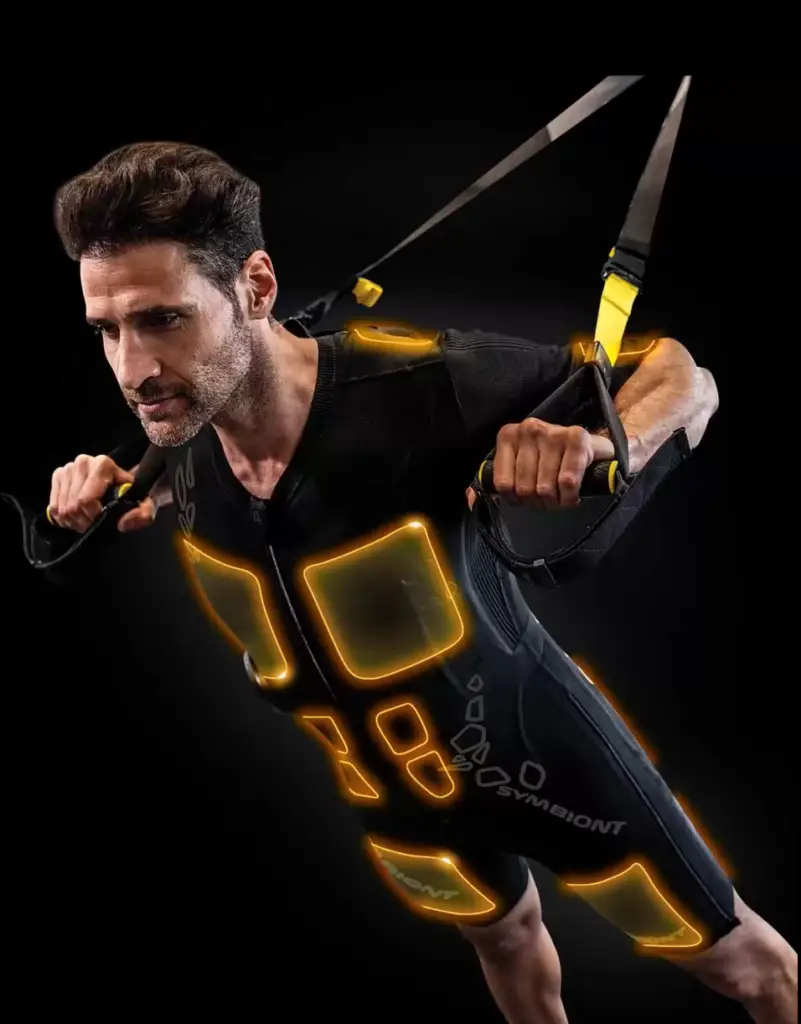Electro Muscle Stimulation has been garnering significant attention in the fitness and rehabilitation sectors. This article aims to provide a comprehensive understanding of what is EMS, including its historical background, applications, and common myths and misconceptions about EMS.
1. What is EMS?
EMS, or Electrical Muscle Stimulation, is a technique that uses electrical impulses to make your muscles contract. It’s similar to the way your brain sends signals to your muscles to move, but with EMS, these signals come from an external device. The device has electrodes that are placed on your skin, and it sends controlled electrical impulses to stimulate muscle contractions. EMS can help improve muscle strength, enhance workouts, aid in recovery, and even help with muscle rehabilitation.
2. The Historical Background of EMS Technology
EMS technology dates back to the 18th century when Luigi Galvani discovered that electrical currents could cause muscle contractions in frogs. This discovery laid the foundation for the development of EMS devices. In the 20th century, EMS found its place in the medical field, primarily used for muscle rehabilitation and preventing muscle atrophy in patients with limited mobility.
Here are important historical milestones in EMS training:
- Around 200 BC | Electric stingray used as headache therapy (Claudius Galenus of Asia Minor)
- 1740 | “The Use of Electricity in Pharmacology” (Kratzenstein), study of physical therapies by Jalabert and Franklin
- 1780 | Luigi and Galvani’s frog leg test, evidence of the excitability of muscle tissue by electrical stimulation
- Early 19th century | Generates mechanical current to stimulate local muscle areas (Faraday, Duchenne)
- Early 20th century | Basic laws and terminology of electrical stimulation (Gildenmeister, Lapique)
- Year 1939 | Tests in mammals show that EMS achieves much higher muscle contraction forces than voluntary contractions
- Circa 1960 | Develop functional electrical stimulation (FES) and TENS (Transcutaneous Electrical Nerve Stimulation)
- Year 1971 | Maximal strength increases in Russian athletes (“Russian Method”) by 30–40% (Kots et al.)
- Late 1990s | Increased use of small EMS devices (especially Compex) in sports
Year 2003 | Market launch of the first whole-body EMS system in the sports and fitness industry (“Body Transformer”) - Year 2007 | Market entry of the whole body EMS system from miha bodytec with innovative belt/vest combination.
3. Modern Applications
Today, EMS is widely used in various fields:
- Medical Rehabilitation: EMS helps in muscle recovery and rehabilitation, particularly for patients with muscle injuries or neurological disorders.
- Fitness and Sports: Athletes and fitness enthusiasts use EMS to enhance muscle strength, endurance, and performance. It is often integrated into workout routines to maximize muscle engagement.
- Aesthetic and Wellness: EMS is employed in body sculpting and cellulite reduction treatments.


4. Realistic Examples of EMS Training Applications
1.Athletic Performance Enhancement: A professional athlete integrates EMS into their strength training regimen. The athlete uses EMS during their regular weightlifting sessions, targeting specific muscle groups to enhance strength and endurance. They perform EMS-enhanced squats and deadlifts twice a week, ensuring they allow 48 hours between sessions for recovery.
2. Post-Injury Rehabilitation: An individual recovering from a knee injury uses EMS to regain muscle strength. Under the guidance of a physical therapist, the individual performs EMS sessions three times a week, focusing on the quadriceps and hamstrings. The EMS helps stimulate muscle contractions and accelerates the rehabilitation process.

3. General Fitness and Muscle Toning: A fitness enthusiast incorporates EMS into their routine for muscle toning. They use EMS for targeted muscle toning sessions, focusing on the abdominal and gluteal muscles. Each session lasts 20 minutes, and they perform these sessions twice a week in addition to their regular cardio and strength training workouts.
4. Busy Lifestyle Fitness: A busy professional uses EMS to maintain muscle strength despite a hectic schedule. The individual schedules two 15-minute EMS sessions per week, focusing on major muscle groups like the chest, back, and legs. This allows them to stay fit and maintain muscle tone without requiring long workout sessions.
5. Common Myths and Misconceptions About EMS
Myth 1: EMS Replaces Traditional Exercise. EMS should complement, not replace, traditional exercise. It is a powerful tool for enhancing muscle engagement and recovery but should be part of a comprehensive fitness plan.
Myth 2: EMS is Painful. When used correctly, EMS should not cause pain. Users may experience a tingling sensation or muscle contractions, but these should not be uncomfortable. Check out 7 side potentials EMS Side Effects to prepare well before training.
Myth 3: EMS is Only for Athletes. EMS is suitable for a wide range of users, from athletes to individuals seeking muscle rehabilitation or enhanced fitness results.
Conclusion: What is EMS?
Electro Muscle Stimulation (EMS) is a versatile and effective technology that offers numerous benefits for fitness and rehabilitation. By understanding about what is EMS, including its history, applications, and optimal usage guidelines, you can incorporate EMS into your routine to achieve enhanced muscle strength, improved recovery, and overall better fitness results. Always consult with professionals and start with a gradual approach to maximize the benefits of EMS while ensuring safety and effectiveness.
Further Reading and resources
For more in-depth information and resources, consider the following links:



